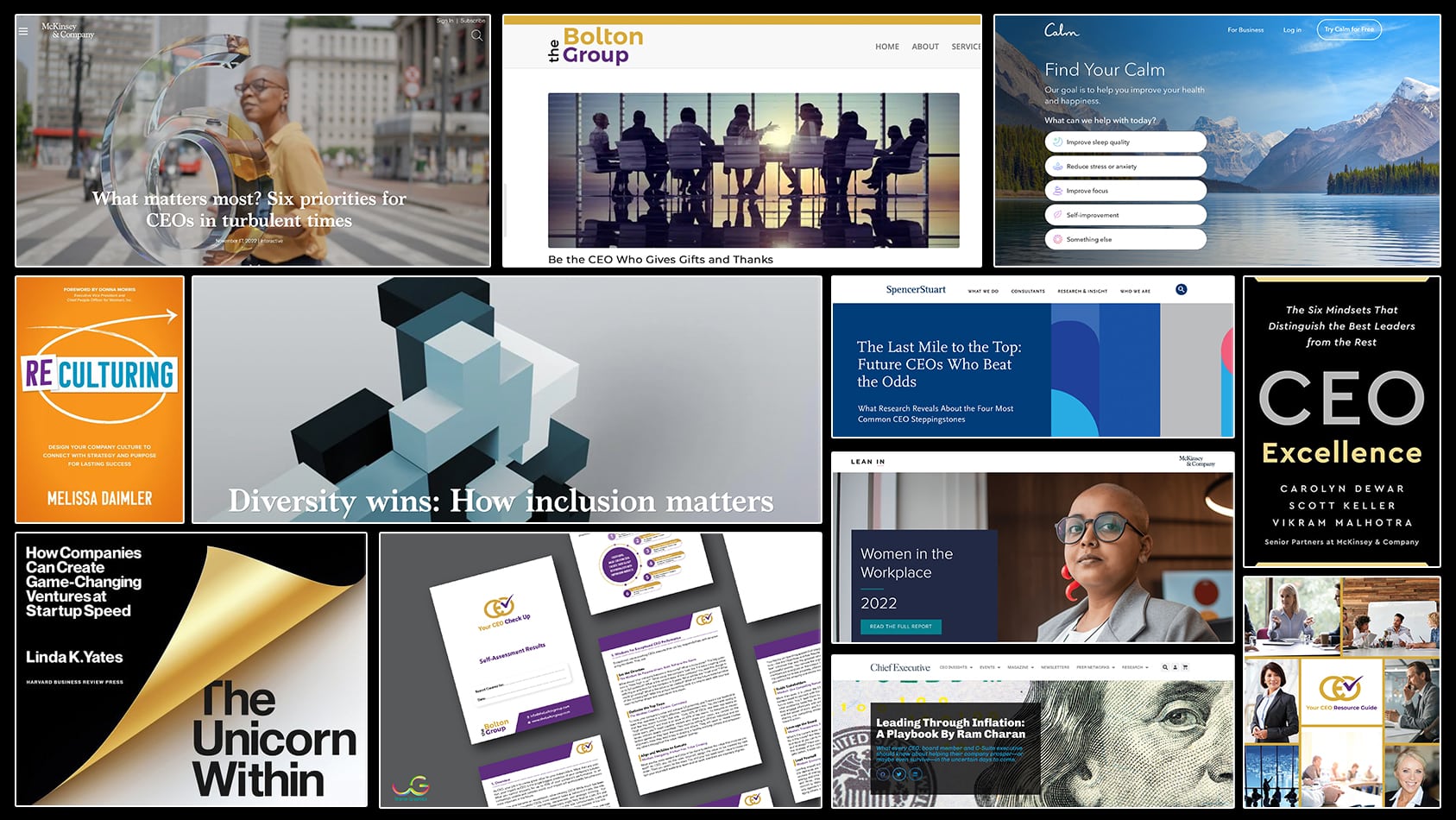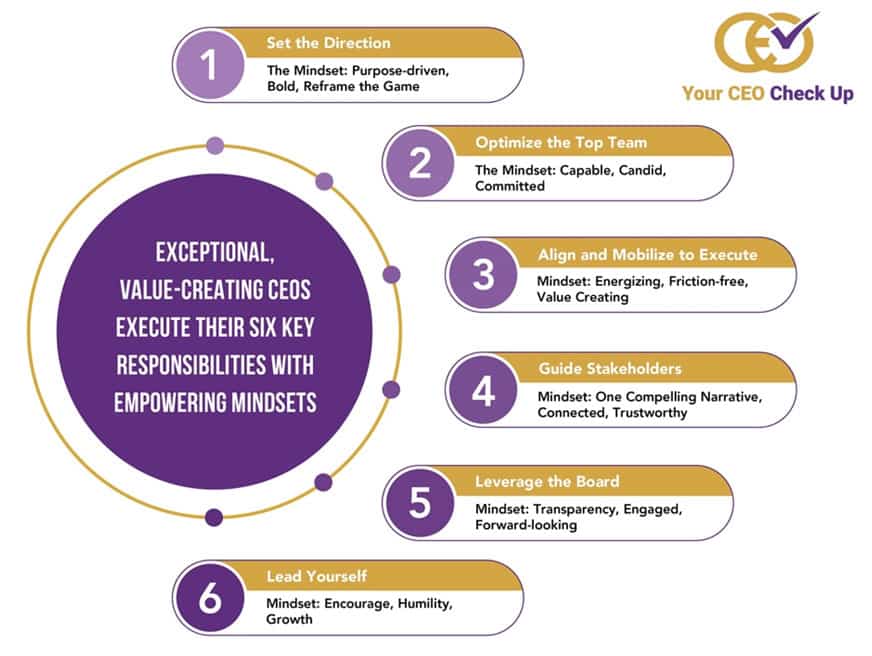Informative Resources for Executives to Create Massive Value
For the first time in person since 2020, the 41st annual J.P. Morgan Healthcare Conference is taking place January 9-12, in San Francisco. Over 8,000 attendees representing 550 healthcare companies have gathered for the premier conference, widely considered to be the largest and most informative healthcare investment symposium in the industry. It connects global industry leaders, emerging fast-growth companies, innovative technology creators and members of the investment community.

With hundreds of CEOs meeting face-to-face for the first time in three years, the networking and insights shared this week are a welcome return to the past. With the higher cost of capital, a focus on tightening the balance sheet, geopolitical concerns, and other factors, we are in an era that requires innovation and value creation. Every healthcare company CEO needs all the resources, connections, expertise and insights they can get to help their company win.

As a CEO executive coach working exclusively in the healthcare sector, I’m asked daily by my clients and others for connections, information, and updates about what’s new in our industry. Since work obligations made it impossible to attend live and converse with colleagues at this year’s event, here’s a list of the most useful reports for healthtech sector CEOs (and other leaders) from the past year I’m recommending.
The selected CEO content comes from research conducted by EY, CB Insights, Accenture, Pitchbook, SVB, McKinsey, KPMG and more, with a short description of the report and a link for quick access. Addressing topics like disruptive technologies, digital health, the future of healthcare, the growing role of private equity, the strategies of the biggest players, these reports share valuable insights. Which forces are transforming the healthtech industry? Which trends deserve the most attention? Which innovations are likely to disrupt? You’ll find the answers within this baker’s dozen list of informative free reports. As you review the material, even in choppy economic waters, you will see there is still a tremendous opportunity for healthtech companies to grow and become more valuable.
Pulse of the Industry Report 2022: In today’s disruptive healthcare environment, how will medtech transform? – EY
To gain deeper insights on where medtech has been and where it’s headed, download the full annual Pulse of the Industry medical technology report. There you will find original perspectives on how medtech can rethink innovation to address new challenges and opportunities in commercial models, supply chain and talent management. https://tinyurl.com/5n8ysx2t
Digital Health and Medtech: New Signals for Transformation – Accenture
Globally, healthcare is experiencing increasing pressure and disruption, from affordability challenges to shifting patient expectations. Care is expanding from hospitals to ambulatory and at-home care, but the industry remains at the beginning stages of having the capabilities to meet this shift. Medtech must find an approach that reflects and benefits from the speed of transformation now enabled by digital innovation. Five trends that can help medtech companies mature and scale their capabilities to thrive in this new paradigm of digital health are shared. https://www.accenture.com/us-en/insights/life-sciences/rise-digital-health
The Future of Healthtech 2022 – SVB
Dramatic shifts over the past year indicate that a market rebalancing is underway, with investments and valuations lowering from 2021’s boom. However, the healthcare industry is more resilient during periods of downturn and remains ripe for innovation.
https://www.svb.com/trends-insights/reports/healthtech-trends-report
2022 State of VC, PE & M&A: Health Tech – Axios Pro
What forces are transforming the healthtech industry right now? Which trends deserve the most attention? Which firms are making the biggest impact on VC, PE and M&A? This report answers those questions. https://www.axios.com/pro/venture-capital-private-equity-manda
Private Markets Rally to New Heights – McKinsey Global Private Markets Review 2022
This annual review of private market investing shares research on industry dynamics and performance. Private markets bounced back last year, despite a new set of risks with a war, higher inflation and interest rates, supply chain and labor challenges. Private equity continued to drive global growth. Private equity fundraising ‘winners’ do so by growing their flagships and raising more frequently. https://tinyurl.com/5yc627u7
US Private Equity Breakdown 2022 – Pitchbook
After a busy start to the year, US private equity dealmakers are finally feeling the bite of higher interest rates, with activity in Q3 collectively slowing across M&A, growth equity and recap deals by more than 20% year-over-year. Yet what may seem like a dramatic decline could also be considered a reset. Far from being a new normal, 2021’s blistering pace of activity was an aberration, making the “old normal” of the pre-pandemic years a better comparison for private equity, according to this report. https://pitchbook.com/news/reports/q3-2022-us-pe-breakdown
Book of Strategy Maps – CB Insights
This 67-page coffee table book of strategy maps shines a light on the strategies behind some of the world’s most important companies – from JNJ, to CVS Health, to Optum.
https://www.cbinsights.com/research/report/book-of-strategy-maps/
2023 US Venture Capital Outlook – Pitchbook
With 2022 coming to an end, many investors are happy to turn the corner on a year that saw crypto ride a remarkable rollercoaster and VC firms clutching their pearls. 2023 is shaping up to be an even more stress-inducing ride for investors, according to this outlook. But while analysts predict some downward movement, there is of course always some upside—if you know where to look. https://pitchbook.com/news/reports/q4-2022-pitchbook-analyst-note-2023-us-venture-capital-outlook
H12022 Digital Health Review – Fletcher Spaght
The report contains details on revenue performance, investments and exits (M&A, IPO).
https://www.fletcherspaght.com/post/h1-2022-digital-health-review
Trust Barometer Global Report 2022 – Edelman
The report is published in January and covers a range of timely and important societal indicators of trust among business, media, government and NGOs, shaping conversation and setting the agenda for the year ahead. https://tinyurl.com/2s4z9kpk
Book of Market Maps – The CB Insights
The reports consist of 31 pages about healthcare companies that are navigating the marketplace. Fascinating and comprehensive. https://www.cbinsights.com/research/report/book-of-market-maps/
2022 Year in Review Images – McKinsey
Reflecting on the past year sheds light on pivotal moments and forges the path toward a resilient future. The past year has been anything but ordinary. The unnerving combination of war, inflation, energy scarcity, and climate change wasn’t what anyone expected as life was just beginning to move forward from the COVID-19 pandemic. 2022 has also proven to be a year of resilience. McKinsey designers put a lens on the images that helped bring our insights to life, and their selections are telling.
https://www.mckinsey.com/featured-insights/2022-year-in-review/2022-the-year-in-images
CEO Outlook: Growth Strategies in Turbulent Times – KPMG
Tested by enormous challenges in quick succession — a global pandemic, inflationary pressures and geopolitical tensions — it’s encouraging that CEOs, surveyed in the 2022 CEO Outlook, were confident in their companies’ resilience and relatively optimistic in their own growth prospects. The 2022 CEO Outlook draws on the perspectives of 1,325 global CEOs across 11 markets to provide insight into their 3-year outlook on the business and economic landscapes. https://tinyurl.com/5n8mnvba
CEO 2022 Study: Own Your Impact: Practical Pathways to Transformational Sustainability – IBM
The IBM Institute for Business Value, along with Oxford Economics, interviewed 3,000 CEOs from 40+ countries and 28 industries as part of this series. These conversations focused on executives’ perspectives on leadership and business; their changing roles and responsibilities; and sustainability, including how they are addressing challenges, what they see as opportunities and visions for the future. https://www.ibm.com/downloads/cas/6NJEKDD8
For additional CEO resources for 2023, see The CEO’s List of “Must Have” Tools for 2023: The Best New Studies, Books, Articles, Apps and Resources for CEOs Who Seek To Create Value in an Uncertain World.
Sometimes it is the smallest insight that can have the biggest returns. When CEOs are equipped with the right insight, at the right time, they make better decisions and all stakeholders benefit. Invest some time reviewing this excellent content to help you lift your game. To become the exceptional, value-creating CEO you are meant to be.




























